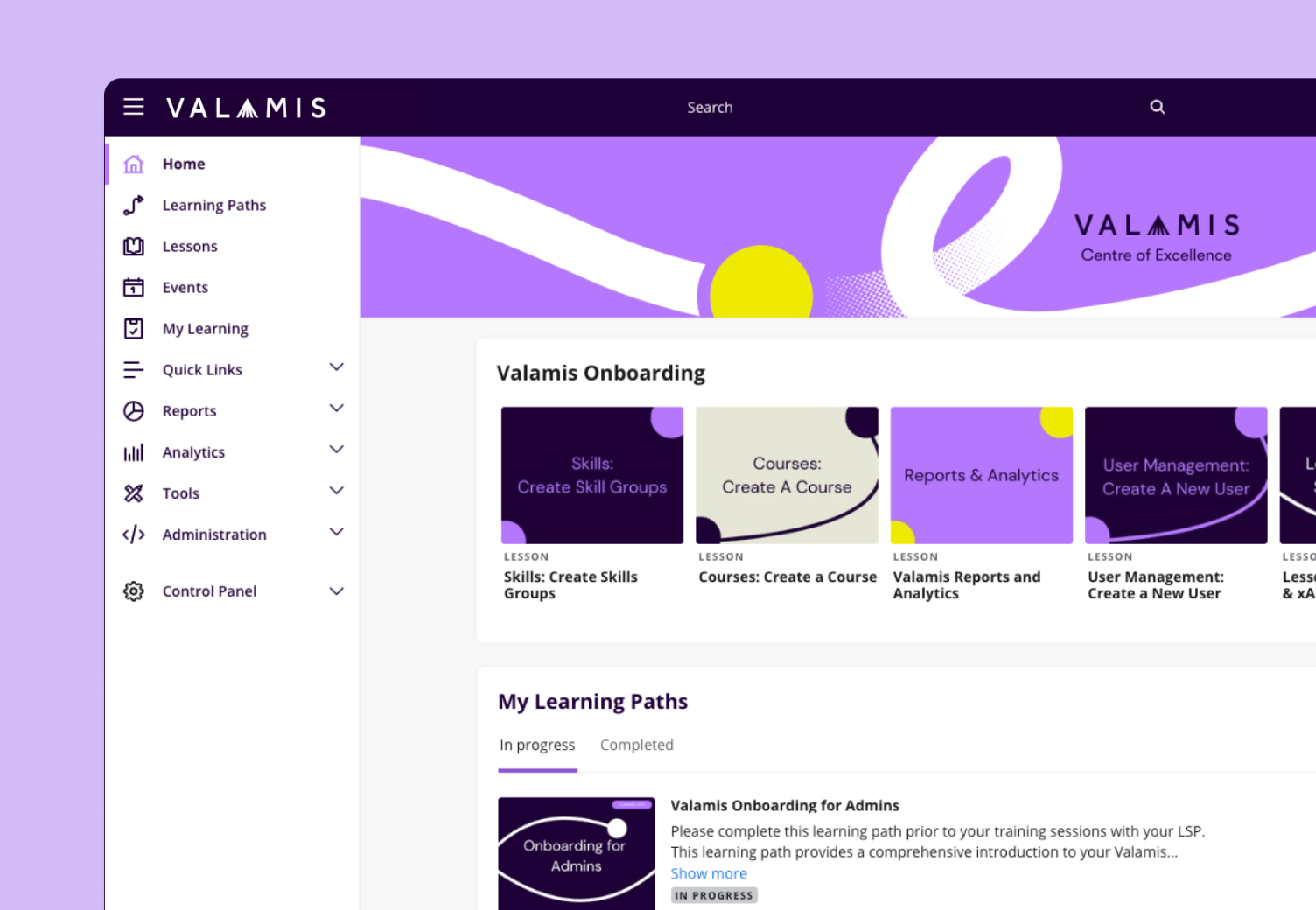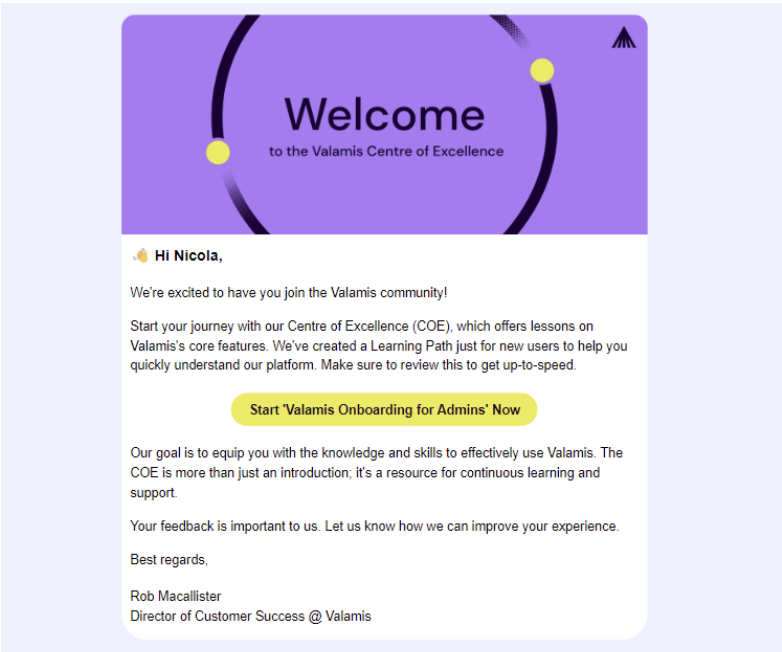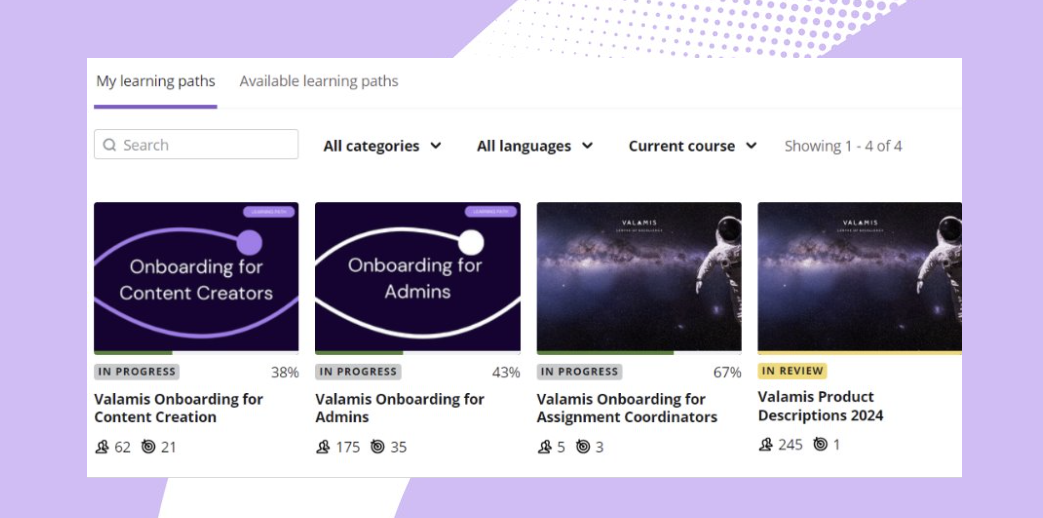How to onboard a new customer in 10 steps
Learn customer onboarding best practices, including a checklist and tips. Improve your client onboarding process with actionable steps and digital solutions for better customer retention.

Customer onboarding is all about helping new customers get the most out of their purchase.
In a competitive market, a great onboarding experience doesn’t just introduce customers to what you offer—it builds their confidence and sets the stage for lasting loyalty. It’s the difference between just gaining new business and keeping customers for the long haul.
If you’re interested in exploring further, we also have blogs that dive into employee onboarding processes and how to effectively onboard partners, ensuring a seamless experience across all aspects of your business.
Discover:
- What is customer onboarding?
- Why is customer onboarding important?
- Common challenges and pitfalls in client onboarding
- Customer onboarding process: How to onboard a new customer in 10 steps
- How to improve onboarding process
- Best practices for onboarding new customers: How Valamis does it
What is customer onboarding?
It involves guiding them on how to use the product or service effectively, offering training, demonstrating best practices, and providing ongoing support.
The goal of a great onboarding experience is to ensure customers feel confident and satisfied from the beginning, setting the stage for long-term happiness and loyalty.

Onboarding checklist in PDF and Excel formats
Ensure a smooth and effective onboarding process for your new hires and set them up for success.
DownloadWhy is customer onboarding important?
If you’ve won a new customer, congratulations! But this is just the beginning—now the real work starts.
When a customer invests both time and money, they’re trusting that your product can solve their problems.
It’s your job to make that belief a reality through dedicated support and a seamless onboarding process. Here’s why customer onboarding is critical to your success.
Accelerates product adoption
Onboarding helps customers get familiar with your platform quickly, allowing them to experience value from the start.
This early success is essential for long-term engagement.
Reduces customer churn
Good onboarding helps customers get comfortable with your product, leading to happier users and less chance of them leaving early.
Increases customer lifetime value
When customers fully understand how to leverage all the features, they’re more likely to renew or expand their use of the platform or product, maximizing their long-term investment.
Improves customer satisfaction
A smooth onboarding experience eliminates confusion and frustration.
By guiding users step-by-step, you ensure they feel supported, which strengthens the customer relationship.
Fosters advocacy and growth
Satisfied customers who have a positive onboarding experience are more inclined to recommend your product, helping you organically grow your user base through word-of-mouth.
Good onboarding isn’t just about company introductions and giving basic training. It’s about arming customers with what they need to succeed at their own pace. The idea is to be proactive and prevent the need for constant hand-holding and virtual training, reducing the risk of realizing too late that a customer is leaving.

This is an example of the Valamis Centre of Excellence home page, offering customers essential onboarding resources and support.
Common challenges and pitfalls in customer onboarding
Customer onboarding is the foundation for building a strong relationship between a business and its new customers, but several challenges can disrupt this process.
One common issue is the overwhelming complexity of onboarding steps. If the process is too time-consuming or detailed, customers can become frustrated or confused. Simplifying and streamlining the process is key.
Unclear communication is another major hurdle. Instructions that are difficult for new users to follow—whether due to ambiguous messaging, jargon, or poorly structured content—can prevent customers from using the product effectively. Clear, straightforward guidance leads to success.
Support also plays a crucial role. Customers who don’t receive adequate help, whether through slow responses or unknowledgeable staff, may feel unsupported and dissatisfied. Providing timely, friendly, and helpful support is essential to preventing churn.
Personalization is equally important. An onboarding process that doesn’t address the specific needs or skill levels of each customer can feel too generic. Tailoring the experience to suit individual users helps ensure they remain engaged.
Additionally, slow onboarding progress can lead to disengagement. A lengthy, drawn-out process may cause customers to lose interest or question the value of the product. Keeping things moving and showing results quickly is vital to retaining their attention.
Information overload is another frequent issue. Giving too much information at once can overwhelm customers, making it difficult for them to absorb and apply what they’ve learned. Ensure there is a balanced approach, delivering knowledge at the right time.
Lastly, ongoing engagement should not be forgotten. Onboarding shouldn’t stop after the initial setup. Regular follow-ups and continued support help customers explore all product features and extract maximum value, reducing the risk of churn.
By simplifying the process, providing clear communication, and offering continuous support, you can create an onboarding experience that is tailored, engaging, and effective, helping customers succeed and spread their knowledge forward.
Customer onboarding process: How to onboard a new customer in 10 steps
Here are some ideas for where to start when building a better customer onboarding experience:
Send an automated welcome email
A basic but proven first step in onboarding.
Send a welcome email immediately after a customer joins or signs up. This email should include the next steps, such as login credentials or access links, and set clear expectations for the onboarding process.

This is an example of the welcome email you receive when you become a Valamis customer, introducing you to our Centre of Excellence as part of our customer onboarding process.
Keep it personal
Within 24 hours, send a personalized message from the onboarding team, specialist, HR manager, or person in charge.
This should include a warm welcome, an outline of the onboarding journey, and information on how to schedule their first meeting. Early engagement helps build a strong relationship and provides customers with a clear roadmap.
Customize and set up the product early
Within the first few days, guide the customer through product setup and customize it according to their needs.
Personalizing the product from the start makes it more relevant to the customer’s specific requirements.
Assign onboarding tasks
Assign specific onboarding tasks to help customers get up and running. Ideas could include watching an introduction video or completing a learning path or lesson.
These tasks, when completed, should be easy for you to track and will give the customer a sense that things are progressing in the right direction.
Provide a product walkthrough or demo
As customers start using your product, offer a walkthrough in person for larger groups or provide a pre-recorded demo for individuals, whichever is more suitable.
If possible, use on-screen text to highlight key features. This allows customers to explore features at their own pace without feeling overwhelmed.
Update and maintain a knowledge base
Having an up-to-date, comprehensive knowledge base is a smart move.
It lets customers find answers whenever they need them, speeding up troubleshooting and making the whole experience smoother.
Incorporate interactive training elements
Let customers reinforce what they’ve learned with hands-on training. Task-related assignments and quizzes that provide instant feedback can be highly motivating.
Celebrate milestones with rewards
Everyone likes to feel a sense of achievement. Whether it’s a badge, certificate, or a “well done” message, celebrating small customer milestones during the onboarding process keeps them engaged.

Schedule regular check-in meetings
Regular check-ins with the person in charge of onboarding are especially important within the first 90 days.
These meetings provide opportunities to address any issues, gather feedback on the process so far, and ensure the customer is on the right track.
Utilize a Learning Management System (LMS)
Whether you have one already or are thinking of investing, an LMS is the ideal place for your customers to access training materials and onboarding content at their own pace.
This flexibility ensures they can learn in a way that suits their schedule and preferences.
Further reading: LMS vs. LXP: which platform to choose

This is an example of the onboarding learning path at Valamis for our customers, showing the key content that guides new employees through essential training.
Planning these steps helps you create a template for your organization’s onboarding process. Always ensure that the steps are measurable so that you can improve the process alongside feedback from the participants. The main goal is to provide a simple and engaging structure to help new customers understand your product and give them the knowledge they need for long-term success.
How to improve the onboarding process (best practices)
- KISS (Keep it Simple and Straightforward!). Make the onboarding process easy to follow, breaking it down into clear steps so customers are not overwhelmed.
- Personalize where possible. Tailor your guidance to each customer’s specific needs, offering advice that is relevant to their goals.
- Don’t underestimate welcome emails. Kick things off with a series of helpful emails introducing key features and keeping customers engaged.
- Offer interactive demos. Let customers learn by doing tutorials or live demos that show them how to use your product.
- Celebrate milestones. Break onboarding into stages and celebrate when they hit key milestones, like setting up their account or using a feature.
- Ask for feedback. Be proactive and reach out regularly. Gather feedback at each stage so you can spot issues early and improve the process. Survey tools such as Survey Monkey, Google Forms, or Microsoft Forms have templates to create great customer feedback surveys.
- Use a platform or LMS. Create your own content, and provide on-demand resources, learning paths, videos, tutorials, and FAQs on your platform for customers who prefer to self-serve.
- Communicate and communicate clearly. Assigning a dedicated point of contact helps with consistency, but if that is not possible, use an online platform to centralize communication and manage the workload more efficiently.
Example of an onboarding process for new customers: How Valamis does it
The initial goals for client onboarding in Valamis
From the outset, our focus has been clear: to enhance efficiency, support growth, and deliver exceptional value.
Here’s how we do it:
- Efficiency: We aimed to reduce the time it takes for customers to become self-sufficient in Valamis and cut down on the time our Learning Solution Partners spend on repetitive training.
- Growth: We focused on creating an onboarding process that’s scalable and available at any time, supporting our global audience with multi-lingual options.
- Value: We wanted to highlight key functionalities and best practices to decrease onboarding time and improve customer satisfaction.
The results after implementing our new onboarding process
Our efforts have led to significant improvements.
By refining our onboarding, we’ve enabled our Learning Solution Partners to manage more customers and concentrate on higher-value, consultative work.
This has not only enhanced customer familiarity with Valamis but also accelerated their journey to realizing the full benefits of our platform.
We’ve achieved a 20% reduction in onboarding time and a 50% cut in retraining costs, adding substantial value to both our business and our customers.
Business value for Valamis
Our approach has notably lowered onboarding costs by 20% and retraining expenses by 50%.
Central to this success is our Centre of Excellence (COE), a dedicated Valamis platform that supports customer onboarding and ongoing training.
This resource is continuously updated with the latest features, FAQs, training materials, release notes, and roadmap information. It exemplifies our professional onboarding process, enhances our team’s capabilities, and allows our partners to focus on strategic business challenges.
How our customers benefit from efficient onboarding
For our customers, the benefits are tangible.
We’ve significantly reduced the time it takes for them to see value from using Valamis.
One of our notable achievements includes migrating a customer from a third-party system to Valamis in just four weeks, with the system fully trained and operational.
Additionally, we’ve facilitated over 100 content creators from a single customer, sparing them from the effort of creating materials themselves. Integrating our lessons as xAPI packages into their environment is also a breeze, taking just 30 seconds.
Tools we use at Valamis for onboarding customers
To support our onboarding process, we leverage a mix of tools.
Inside Valamis, we utilize native text translations in our Lesson Studio content creator to accommodate various languages.
Externally, we use Vimeo’s auto-caption tool for English and Murf.ai’s voiceover tool for professional-quality voiceovers in Dutch and Finnish.
This comprehensive approach ensures that our customers are not only onboarded quickly but also continue to see ongoing value in using Valamis.

Onboarding checklist in PDF and Excel formats
Ensure a smooth and effective onboarding process for your new hires and set them up for success.
Download



